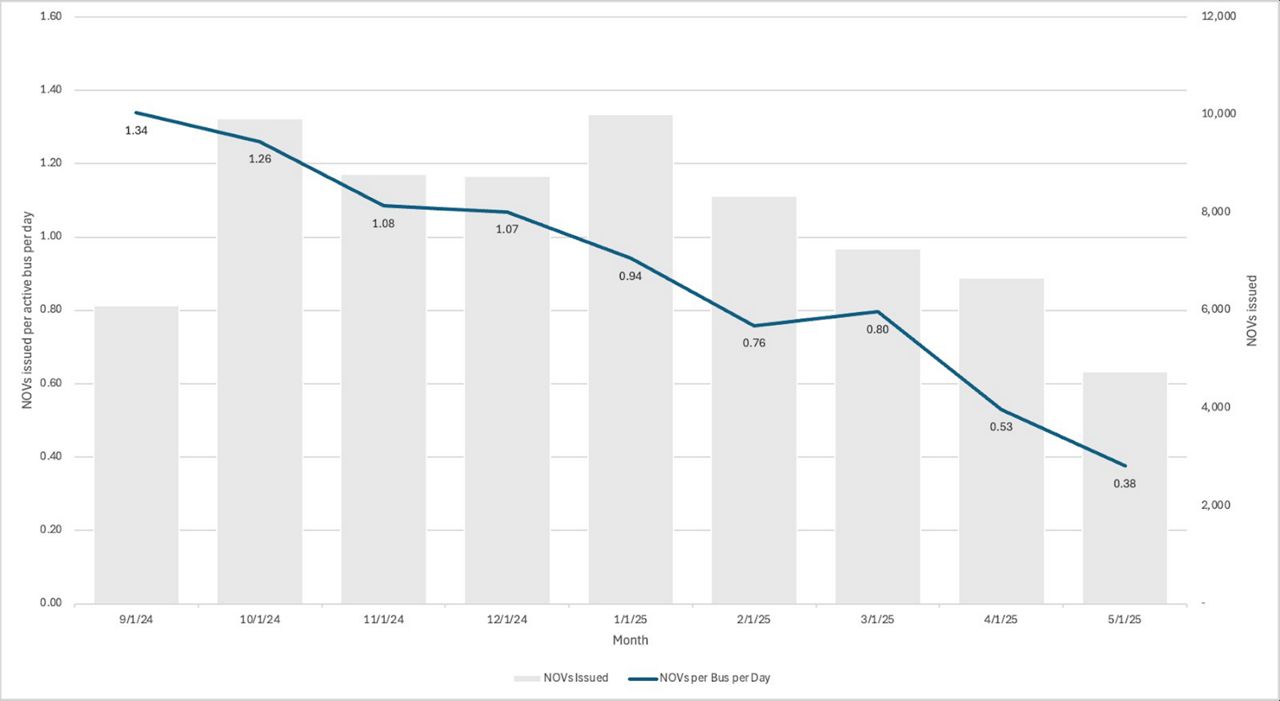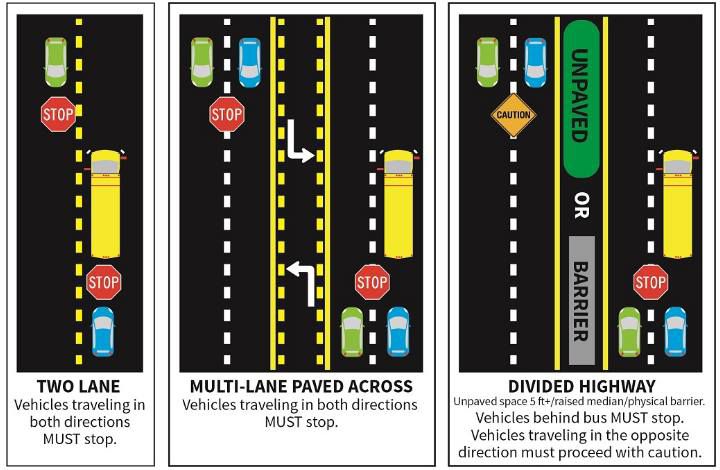[ad_1]
TAMPA, Fla. – As students head back to school today, officials in Tampa Bay and throughout the state are reminding everyone about the importance of school bus safety.
Hillsborough County Public Schools, in collaboration with the school bus safety organization BusPatrol, has unveiled a report card that outlines the outcomes of last year’s school bus stop-arm safety camera initiative.
According to Florida law, drivers must stop when a school bus shows a stop signal. They can only proceed once the stop signal has been removed.
Over the past year, the number of violations recorded per school bus each day decreased month by month as drivers became more aware of the Hillsborough stop-arm camera program.
During the program’s initial month, there was an average of 1.34 violations per school bus on school days. By the last month of the school year, this figure dropped to .38. Additionally, the program reported a recidivism rate of under 5%, indicating that over 95% of drivers cited for a stop-arm camera violation did not re-offend.

For additional information on HCPS’s collaboration with BusPatrol and to find out more about school bus safety, click here.
“As drivers, we have the responsibility to safeguard our children,” stated Hillsborough Superintendent Van Ayres. “Our district transports nearly 80,000 students daily, and their safety remains our top priority.”
 
According to a recent AAA survey, 38% of drivers admitted to speeding, and 31% acknowledged using a handheld cell phone in active school zones.
FLHSMV emphasizes the need for drivers to be vigilant about lower speed limits, adhere to signals from school crossing guards, and only park or drive in authorized areas when dropping off or picking up children. Parents are also encouraged to discuss safety tips with their children to ensure they are safe around school buses and school zones.

(Courtesy of FLHSMV)
Motorists are obligated to stop when approaching a school bus with its red lights flashing and STOP arms extended. Other regulations regarding areas near school buses include:
- On two-lane roads, all drivers in both directions on a two-way street must stop for a school bus that displays a stop signal and remain stopped until the road is clear of children and the stop arm is retracted.
- On highways divided by a paved median, all drivers in either direction must stop for a school bus displaying a stop signal and must stay stopped until the area is clear of children and the bus stop arm is withdrawn.
- Divided highways with barriers, such as concrete dividers or at least 5 feet of unpaved space between traffic lanes, are the only roads where vehicles approaching an oncoming school bus do not need to stop. On such highways, drivers coming from the opposite direction aren’t required to stop for the bus (though painted lines or pavement markings do not count as barriers). However, these drivers should slow down and be cautious of students loading or unloading from the bus.
Consequences for passing a stopped school bus include a moving violation citation, mandatory completion of a basic driver improvement course upon conviction, four points added to your driver’s license, and a minimum fine of $165. Motorists passing on the side where children board and exit the bus face a minimum fine of $265.
Should a driver pass a school bus and inflict serious bodily injury or fatality on another person, penalties include 120 hours of community service at a trauma center or hospital, participation in a victim’s impact panel session (or a FLHSMV-approved driver improvement course if such a panel is unavailable), six points on the driver’s license, at least one year of license suspension, and a fine of $1,500.
🚌 With school buses back on the roads today, some good reminders of when to stop! Drive safe! @BN9 pic.twitter.com/2JXWwzYAue
— Tim Wronka (@TimWronka) August 10, 2023
FLHSMV and AAA offer further school safety tips for parents and children.
For drivers:
- Reduce speed.
- Completely stop at stop signs in school zones or neighborhoods, ensuring to check for children on sidewalks and in crosswalks before continuing.
- Focus on the road.
- Slow down and maintain a minimum of 3 feet of distance when passing a cyclist.
For pedestrians:
- Stay alert at all times. Refrain from texting or using headphones to better hear nearby traffic.
- Use sidewalks where accessible. If not available, walk against traffic to see oncoming vehicles.
- Wear bright or reflective clothing to improve visibility.
For bicyclists:
- Always wear a helmet and bright or neon clothing.
- Bike in the same direction as traffic, staying as far right as possible. Use bike lanes whenever available.
- Avoid wearing headphones to be aware of approaching vehicles.
- Cross streets at designated intersections. Don’t emerge into the roadway from between parked cars.
Regarding school buses:
- Arrive at the bus stop approximately five minutes prior to the scheduled arrival of the bus.
- While waiting at bus stops, children should maintain a distance of five steps from the curb and never sit on the road or curb.
- Stay alert and take off headphones to hear oncoming traffic.
- Ensure children know their bus driver’s name and bus number.
- Instruct children not to talk to strangers at the bus stop or get into a car with someone they don’t know. Children should inform parents, the bus driver, or a teacher at school if a stranger engages them.
- Children must never walk behind a bus and should avoid the bus wheels at all times. When the bus halts, they should wait for the driver’s signal indicating it is safe to cross the road or board the bus.
- Before crossing the street, children should look both ways—left, right, and left again—to ensure they are seen by the bus driver.
- On the bus, children are to remain seated at all times, keep the aisles clear, and avoid putting heads, hands, or arms out the window.
- Children should cease talking and remain quiet when the bus approaches a railroad crossing so the driver can hear if a train is coming.
- Avoid any loud or distracting behavior that might hinder the bus driver from safely operating the vehicle.
- For more details on school bus safety, refer to the official Florida Driver License Handbook.
[ad_2]
Read the full article here: Source link

